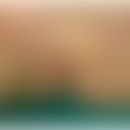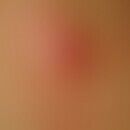Synonym(s)
Wound myiasis
DefinitionThis section has been translated automatically.
Myiasis with development of fly larvae in open skin wounds, ulcerated skin lesions and necrotically decomposing tumours as a result of the oviposition of different fly species, e.g. Musca domestica, calliphorides, etc.
Occurrence/EpidemiologyThis section has been translated automatically.
Rarely to be found under normal hygienic conditions in Germany, but occasionally among migrants or long-distance travellers. Common in third world countries, especially under poor hygienic conditions or contact with animals.
TherapyThis section has been translated automatically.
- For superficial myiasis, simple cleaning of the wound and expulsion of the larvae will usually be sufficient. In rare cases where there are deeper ducts or uncertainty as to whether the larvae have been completely removed, it is advisable to cover the affected areas thickly for a few hours with fatty ointments such as Vaselinum alb. or paraffin. Due to the lack of oxygen, the larvae move from their crypts to the surface. After removal of the fat, manual expulsion of the larvae with tweezers or scalpel, if necessary in LA by overmoulding with scandicain or chlorethylspray treatment.
- In the case of nasal infestation, the maggots are killed by closing the nostril with a cotton swab soaked in choroform and turpentine (1:4), followed by removal of the larvae.
- In case of secondary infections, broad-spectrum antibiotics, e.g. with penicillinase-resistant penicillins such as dicloxacillin (e.g. InfectoStaph Kps.) 2-3 g/day p.o. for 10 days, if possible after antibiogram. Wound treatment.
LiteratureThis section has been translated automatically.
- Anegg B et al (1990) Wound myiasis. Dermatologist 41: 461-463
- Estrada B et al (2003) Ectoparasitic infestations in homeless children. Seminar Pediatric Infect Dis 14: 20-24
- Frieling U et al (1999) Cutaneous myiasis--a vacation souvenir. dermatologist 50: 203-207
- Jappe U (2002) Unusual skin infections in military personnel. Clin Dermatol 20: 425-434
- Kiercks K et al (1995) Cutaneous myiasis caused by Dermatobia hominis. Z Hautkr 70: 297-299
- Robert L et al (2002) Imported furuncular myiasis in Germany. Mil Med 167: 990-993
- Safdar N et al (2003) Autochthonous furuncular myiasis in the United States: case report and literature review. Clin Infect Dis 36: e73-80
- Tamir J et al (2003) Dermatobia hominis myiasis among travelers returning from South America. J Am Acad Dermatol 48: 630-632
Incoming links (1)
Wound myiasis;Disclaimer
Please ask your physician for a reliable diagnosis. This website is only meant as a reference.




